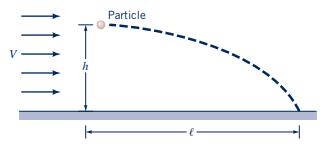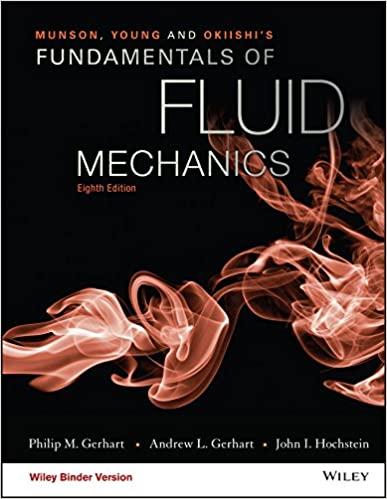When small particles of diameter (d) are transported by a moving fluid having a velocity (V), they
Question:
When small particles of diameter \(d\) are transported by a moving fluid having a velocity \(V\), they settle to the ground at some distance \(\ell\) after starting from a height \(h\) as shown in Fig. P7.54. The variation in \(\ell\) with various factors is to be studied with a model having a length scale of \(\frac{1}{10}\). Assume that
\[
\ell=f(h, d, V, \gamma, \mu)
\]
where \(\gamma\) is the particle specific weight and \(\mu\) is the fluid viscosity. The same fluid is to be used in both the model and the prototype, but \(\gamma\) (model) \(=9 \times \gamma\) (prototype).
(a) If \(V=50 \mathrm{mph}\), at what velocity should the model tests be run?
(b) During a certain model test it was found that \(\ell\) (model) \(=0.8 \mathrm{ft}\). What would be the predicted \(\ell\) for this test?
Figure P7.54

Step by Step Answer:

Munson Young And Okiishi's Fundamentals Of Fluid Mechanics
ISBN: 9781119080701
8th Edition
Authors: Philip M. Gerhart, Andrew L. Gerhart, John I. Hochstein





